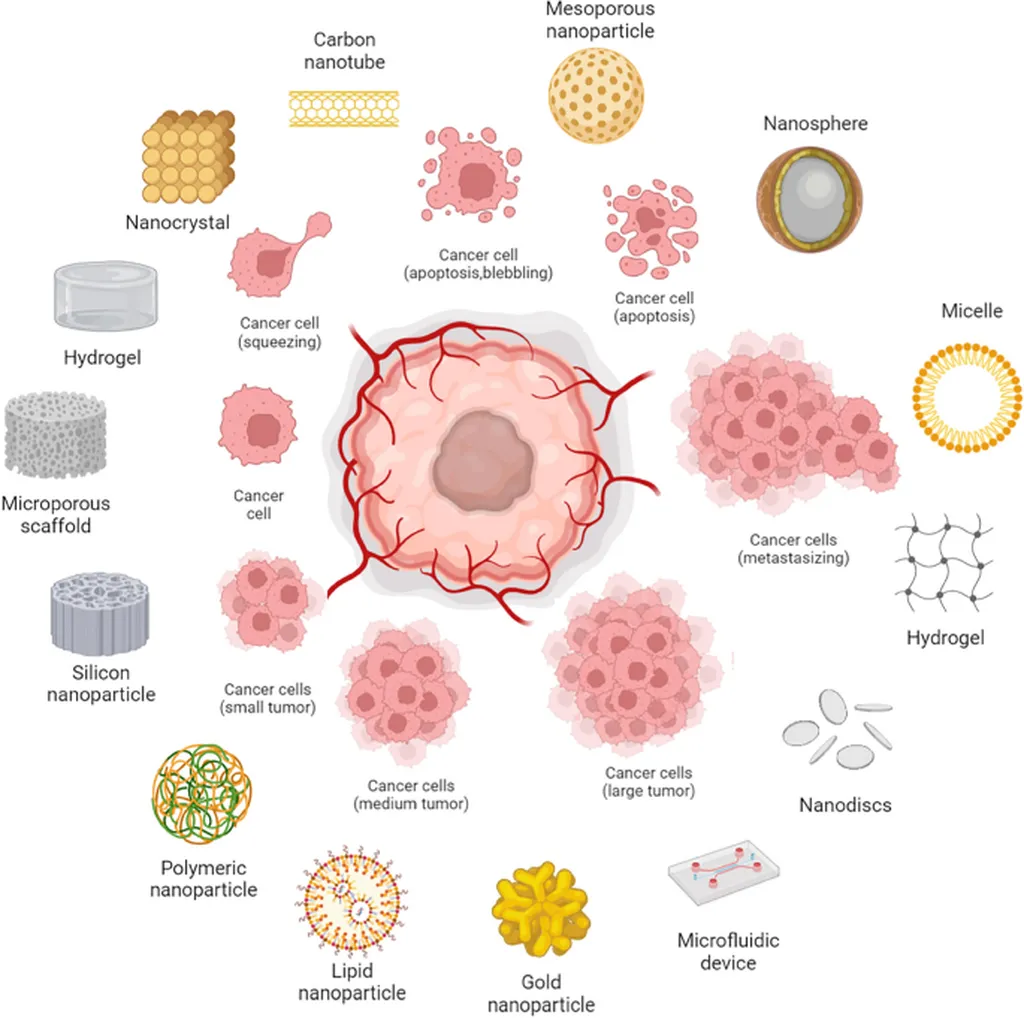In the heart of Riyadh, a team of researchers led by Lamya Alotaibi from the Department of Chemistry at King Saud University has made a significant stride in the realm of cancer treatment and bioimaging. Their work, recently published in the journal Materials Research Express, introduces a multifunctional nanosystem that could revolutionize targeted drug delivery and real-time monitoring of cancer therapies.
At the core of this innovation lies multi-walled carbon nanotubes (MWCNTs), engineered to be more than just a carrier. “We’ve transformed these nanotubes into a multifunctional platform,” Alotaibi explains. “They’re not just delivering drugs; they’re also enabling imaging and responding to the tumor microenvironment.”
The team functionalized the MWCNTs with a series of biocompatible polymers and a pH-sensitive dye, creating a nanosystem that is both smart and targeted. The key to its intelligence is the pH-sensitive dye, Nile Blue, which allows the system to release its payload specifically in the acidic environment of tumors. “We’ve seen up to 60% drug release in acidic conditions,” Alotaibi reveals, “which is a significant improvement in targeting the tumor site.”
The implications for the energy sector might not be immediately obvious, but the principles of targeted delivery and real-time monitoring could inspire similar innovations in energy storage and distribution. Imagine a system that delivers power precisely where and when it’s needed, with real-time monitoring to optimize efficiency. The potential for reducing waste and improving performance is substantial.
Moreover, the integration of bioimaging capabilities offers a dual functionality that could translate into dual benefits in other sectors. “The ability to monitor the delivery process in real-time is a game-changer,” Alotaibi states. This level of control and feedback could lead to more efficient and effective systems across various industries.
The research also highlights the importance of interdisciplinary collaboration. By bringing together expertise from chemistry, biology, and engineering, Alotaibi and her team have created a platform that could pave the way for future developments in targeted therapies and beyond. As we look to the future, the potential for these multifunctional nanosystems to shape the landscape of cancer treatment and other sectors is immense. The journey has just begun, and the possibilities are as vast as they are exciting.

